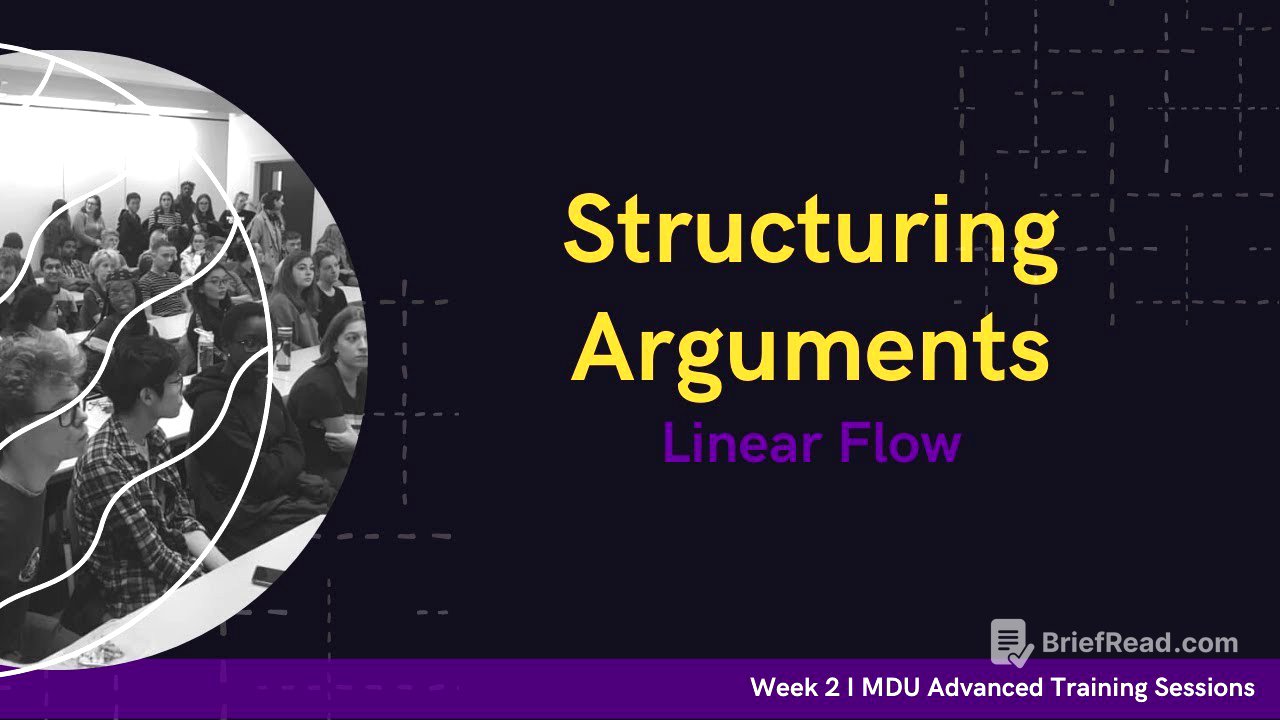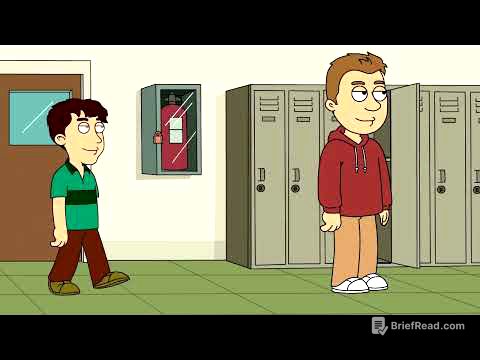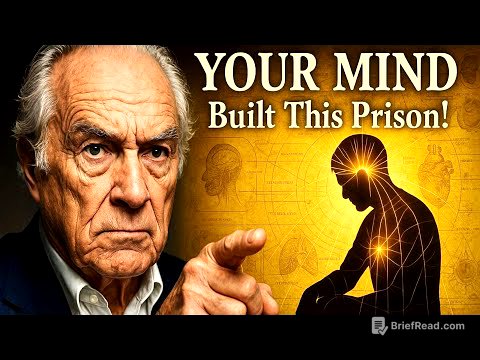TLDR;
This workshop focuses on improving argumentation skills in debating, particularly through the concepts of linear flow and tiered analysis. Linear flow involves structuring arguments logically from problem to solution, while tiered analysis means providing multiple layers of argumentation to make cases more robust and comprehensive. The speaker identifies common issues in argument construction and offers strategies to address them, aiming to enhance persuasiveness and speaker point scores.
- Linear flow ensures arguments progress logically from problem to solution.
- Tiered analysis involves providing multiple layers of argumentation for robustness.
- Addressing various roots of a problem or considering different actors can strengthen arguments.
What's wrong with most matter speeches [1:06]
Many debaters struggle with argument construction due to missing key components like impact, framing, or logical links. It's often unclear where a point is heading, leading to wasted time on meaningless details. Arguments can also be hard to follow if they lack a natural flow, jumping between different elements without a clear structure. Improving internal argument structure helps debaters identify missing parts and present arguments in a more disciplined and coherent manner.
Linear flow [3:57]
Linear flow is the path an argument takes from beginning to end, where each step is necessary and contributes to the argument's endpoint without unnecessary detours. A typical linear flow involves identifying a problem or framing the current situation, explaining why the problem exists, showing how the motion affects the problem, explaining the impact of the change, and weighing the importance of the impact. This structure mirrors the setup, conflict, resolution, and ending found in well-paced movies, emphasizing the importance of allocating time effectively to each component.
Tiering your analysis [10:27]
Tiering analysis involves providing multiple levels of argumentation to make a case more robust and comprehensive. This approach makes it harder for opponents to rebut everything, allows for more comprehensive coverage of different dimensions of a problem, and strengthens extensions in opening half debates. Problems often have multiple roots and actors respond in various ways, so covering as much as possible is crucial for persuasiveness. However, it's important to avoid superficial analysis by gradually increasing the complexity of arguments.
Multiple roots to a problem (drugs motion) [13:56]
One way to tier analysis is by addressing multiple roots of a problem. For example, in the motion to legalize all drugs, drug cartels in Latin America are identified as a significant problem. The roots of this problem include the recruitment of vulnerable young men, violence inherent in the drug trade, and the use of drug money to fund other illicit activities. Legalizing drugs can address each of these roots by reducing the recruitment of drug mules, decreasing violence, and diminishing the cartels' funding for activities like human trafficking.
Different incentives (gender quota motion) [16:25]
Another method of tiering involves showing how a motion changes a single root problem in multiple ways. In the context of gender quotas in corporate senior management, the root problem is identified as entrenched sexism. Implementing gender quotas can change this by enabling the passage of policies that make workplaces less hostile to women, normalizing the presence of women in senior positions, and providing role models that encourage women to strive for promotions.
Different actors (EU motion) [19:16]
Analysis can also be tiered by targeting different actors affected by a motion. Regarding the motion to restrict EU development aid to member states with anti-democratic practices, different actors include the people within those countries, the strongmen leaders themselves, and borderline countries. Restricting aid can cause resentment towards strongmen, deter them from anti-democratic actions, and dissuade borderline countries from similar practices.
Different contexts (organised religions motion) [21:55]
Considering different contexts is another way to tier analysis, particularly to protect against being out-framed. In the motion concerning dominant organized religions declaring more progressive interpretations of traditional dogma, the effects can vary in developed and developing countries. In the developed world, it may drive away the most devoted due to the religion becoming too similar to secular society. In the developing world, it may alienate moderates by being too progressive for mainstream society.
Other ways you can tier your analysis [24:11]
Besides the mentioned strategies, tiering analysis can also involve considering second-order impacts and different time scales. Second-order impacts refer to the secondary effects of an initial impact, such as how racial quotas in universities can lead to more minority children attending university. Analyzing short-term and long-term effects, like how media representation affects children's aspirations, can also provide a more comprehensive understanding of a motion's implications.









